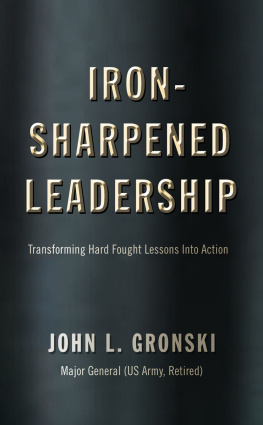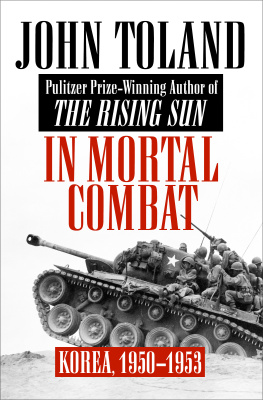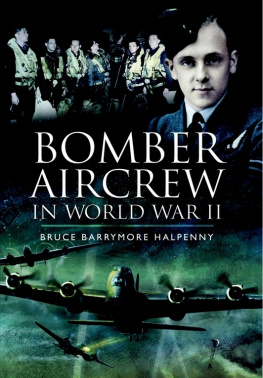
This edition is published by PICKLE PARTNERS PUBLISHINGwww.picklepartnerspublishing.com
To join our mailing list for new titles or for issues with our books picklepublishing@gmail.com
Or on Facebook
Text originally published in 2000 under the same title.
Pickle Partners Publishing 2014, all rights reserved. No part of this publication may be reproduced, stored in a retrieval system or transmitted by any means, electrical, mechanical or otherwise without the written permission of the copyright holder.
Publishers Note
Although in most cases we have retained the Authors original spelling and grammar to authentically reproduce the work of the Author and the original intent of such material, some additional notes and clarifications have been added for the modern readers benefit.
We have also made every effort to include all maps and illustrations of the original edition the limitations of formatting do not allow of including larger maps, we will upload as many of these maps as possible.
The Art of Wing Leadership and Aircrew Morale in Combat
J OHN J. Z ENTNER Lt Col, USAF
TABLE OF CONTENTS
Contents
TABLE OF CONTENTS
FOREWORD
Lt Col John J. Zentners The Art of Wing Leadership and Aircrew Morale in Combat addresses the role that the air force wing commander plays in affecting the level of aircrew morale during combat. More specifically, Colonel Zentners study seeks to identify and define those unique characteristics associated with leading airmen that sustain aircrew morale in the face of significant losses.
Colonel Zentner defines aircrew morale as the enthusiasm and persistence with which an aviator flies combat missions. He then offers three historical case studies to establish a framework within which aircrew morale can be assessed. The first case study is of Maj Adolf Galland and Jagdgeschwader 26 during the Battle of Britain. The second case study considers Lt Col Joseph Laughlin and the 362d Fighter Group during the invasion of France in the summer of 1944. The third case study examines Col James R. McCarthy and the 43d Strategic Wing during Operation Linebacker II. Drawing heavily on the results of questionnaires and personal interviews, each case study is focused on the importance that aircrews ascribed to three general areas: individual needs, group cohesion, and unit esprit de corps.
Colonel Zentner concludes that aircrew control over development of combat tactics was the single most important element affecting morale. This finding supports one of the fundamental truths about the employment of airpower, centralized control and decentralized execution that has become embedded in the airmans culture. In each of the three cases studied by the author, morale generally improved when the wing commander either displayed a personal flair for tactical innovation or allowed his subordinates to become innovative. Conversely, morale declined when higher headquarters placed burdensome and unsound restrictions on aircrew tactics. In light of the restrictive rules of engagement that have governed recent applications of American airpower, Colonel Zentner recommends the USAF take steps to modify doctrine and professional military education in order to relate the findings of this study to the combat air forces.
The Art of Wing Leadership and Aircrew Morale in Combat originally was written as a masters thesis for Air Universitys School of Advanced Airpower Studies. In cooperation with the College of Aerospace Doctrine, Research and Education (CADRE), the Developing Aerospace Leaders Program Office is pleased to support publication of Colonel Zentners study as a CADRE Paper and thereby make it available to a wider audience in the US Air Force and beyond.
Major General, USAF, Retired
Director, Developing Aerospace Leaders Program Office
ABOUT THE AUTHOR
Lt Col John J. Zentner (BSEE, Loyola Marymount University; MBA, University of Phoenix), a senior navigator with 2,000 flying hours, is chief, Synchronization Cell, Seventh Air Force, Osan Air Base, Korea. He was commissioned through the Reserve Officer Training Corps, Loyola Marymount University, in 1987. Graduating from specialized undergraduate navigator training in 1988, he went on to fly the F-111F as a weapon systems officer at RAF Lakenheath, United Kingdom. Colonel Zentner flew 25 combat missions in the 1991 Persian Gulf War and transitioned to the F-15E in 1992. He served a tour at Nellis Air Force Base (AFB), Nevada, in the 422d Test and Evaluation Squadron and an operational assignment in the 366th Air Expeditionary Wing, Mountain Home AFB, Idaho. Colonel Zentner is a graduate of the USAF Fighter Weapons School, Air Command and Staff College, and the School of Advanced Airpower Studies.
ACKNOWLEDGMENTS
I acknowledge several people without whose support and help I could not have completed this work. I thank Joseph Caver of the USAF Historical Research Agency, who spent hours assisting me with primary source documents throughout the year. I thank author Donald L. Caldwell and Herr Wilhelm Goebel of the German Fighter Pilots Association for their assistance in contacting former Luftwaffe pilots from World War II. Also, my colleague Maj B. J. Shwedo was a constant source of additional information during this project as he pointed out several useful documents that he discovered in the course of his own work. I especially thank Col Joseph L. Laughlin, USAF, Retired, and Brig Gen James R. McCarthy, USAF, Retired, for their personal interviews, extensive commitment of time, and general support. Additionally, I would be remiss if I did not wholeheartedly thank the fighter pilots and bomber crews who took the time to share their combat experiences with me by completing my questionnaires, sending E-mails, or calling me on their own nickel. The personal contacts I made during this project have been extremely rewarding and would not have been possible without the help of Gerald Horiuchi, Stan Stepnitz, and Mrs. Fern Mann. Most importantly, I acknowledge the tremendous love and support of my wife, Mary Beth, and our daughters, Elizabeth and Sarah. They provided help and understanding throughout.
CHAPTER 1 INTRODUCTION
I would describe the morale [of US troops] in the desert as adequate. Sen. Kay Bailey Hutchison May 1998
The intensity of aerial combat often masks the brevity of the engagement under examination. The fighting spirit of the combatants must sustain them not only through the brief life-or-death struggles in the air but also through the more mundane and more frequent interludes. Wartime morale is shaped by the various elements to which airmen are exposed. {1} It has been argued that the single most powerful influence on morale is exerted by the commander who leads airmen into battle. {2} This study explores the relationship between air force wing commanders and aircrew morale during combat in which significant losses are experienced.
LEADERSHIP AND MORALE IN AIR COMBAT
The post-cold-war leveling-off of American defense spending combined with sharp cuts in aircraft major weapon systems procurement could place the United States at a quantitative disadvantage against a future adversary. Advanced technology traditionally has provided qualitative advantages in combat capability, but aircrew morale has demonstrated in the past that it too has been a combat multiplier. {3} For centuries military commanders have realized that raising troop morale magnifies their combat potential. It stands to reason that competent air force leaders will use every means at their disposal to capitalize on any advantage in war. This study addresses an issue that, in todays USAF at least, often is either ignored or misunderstood. {4}











